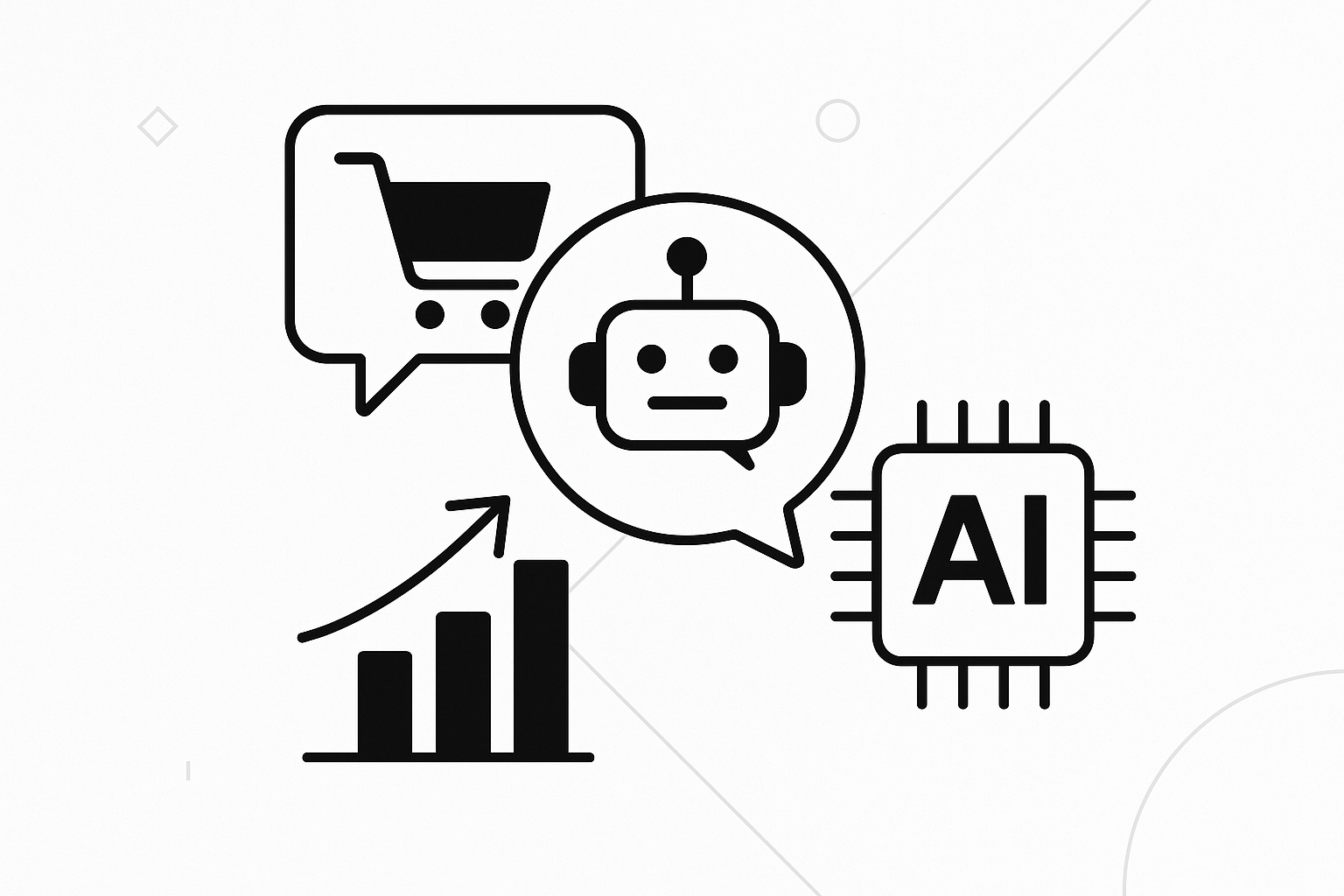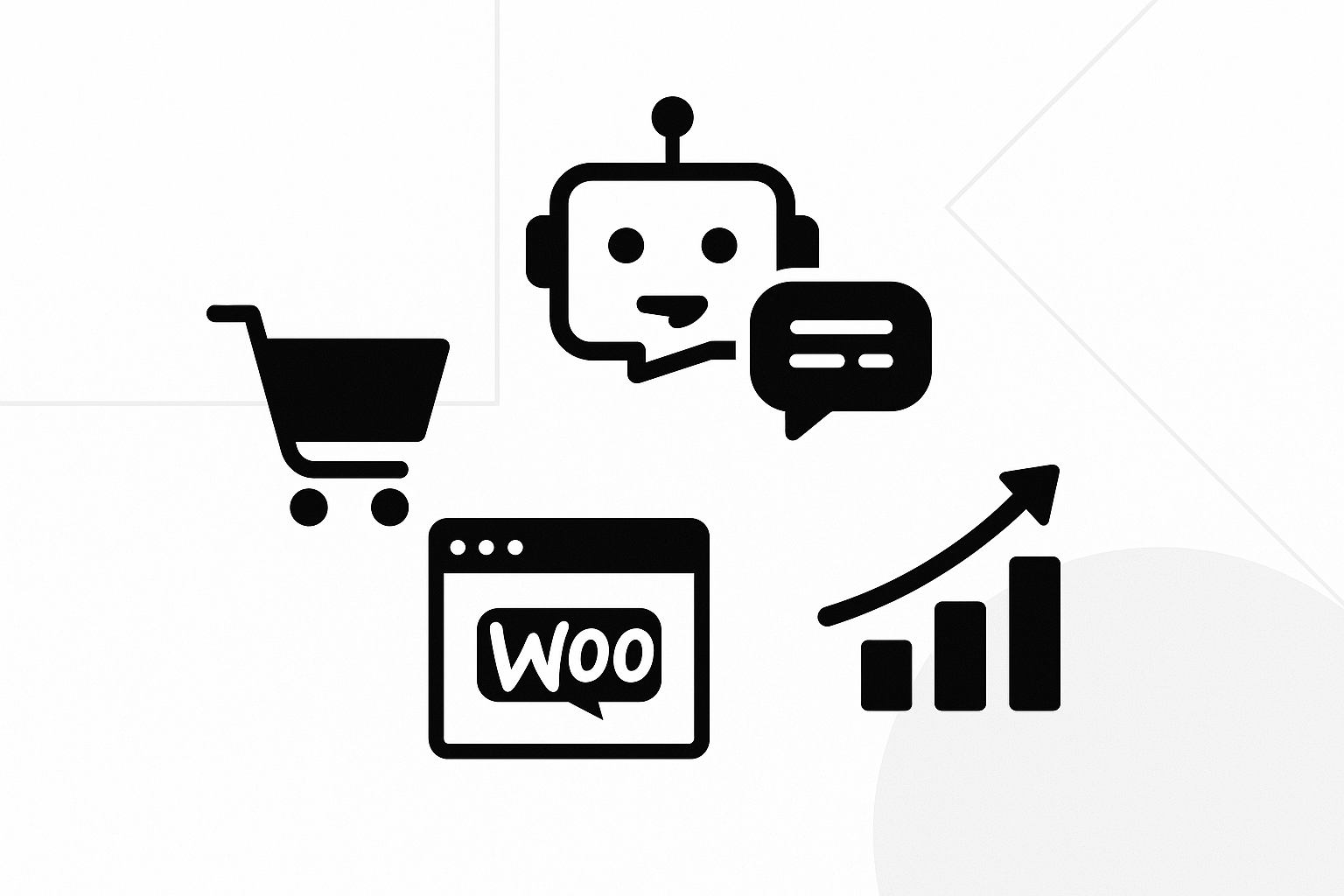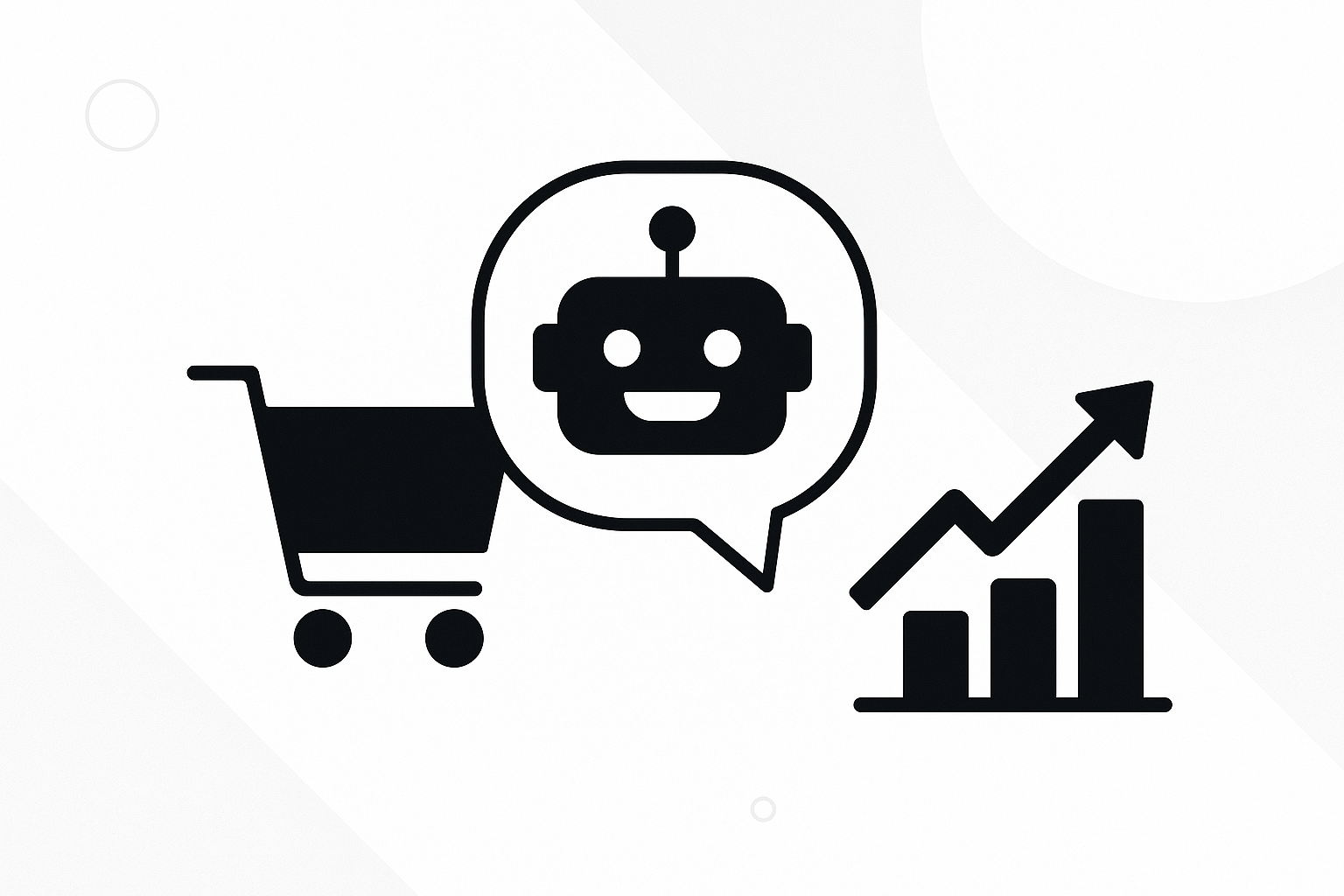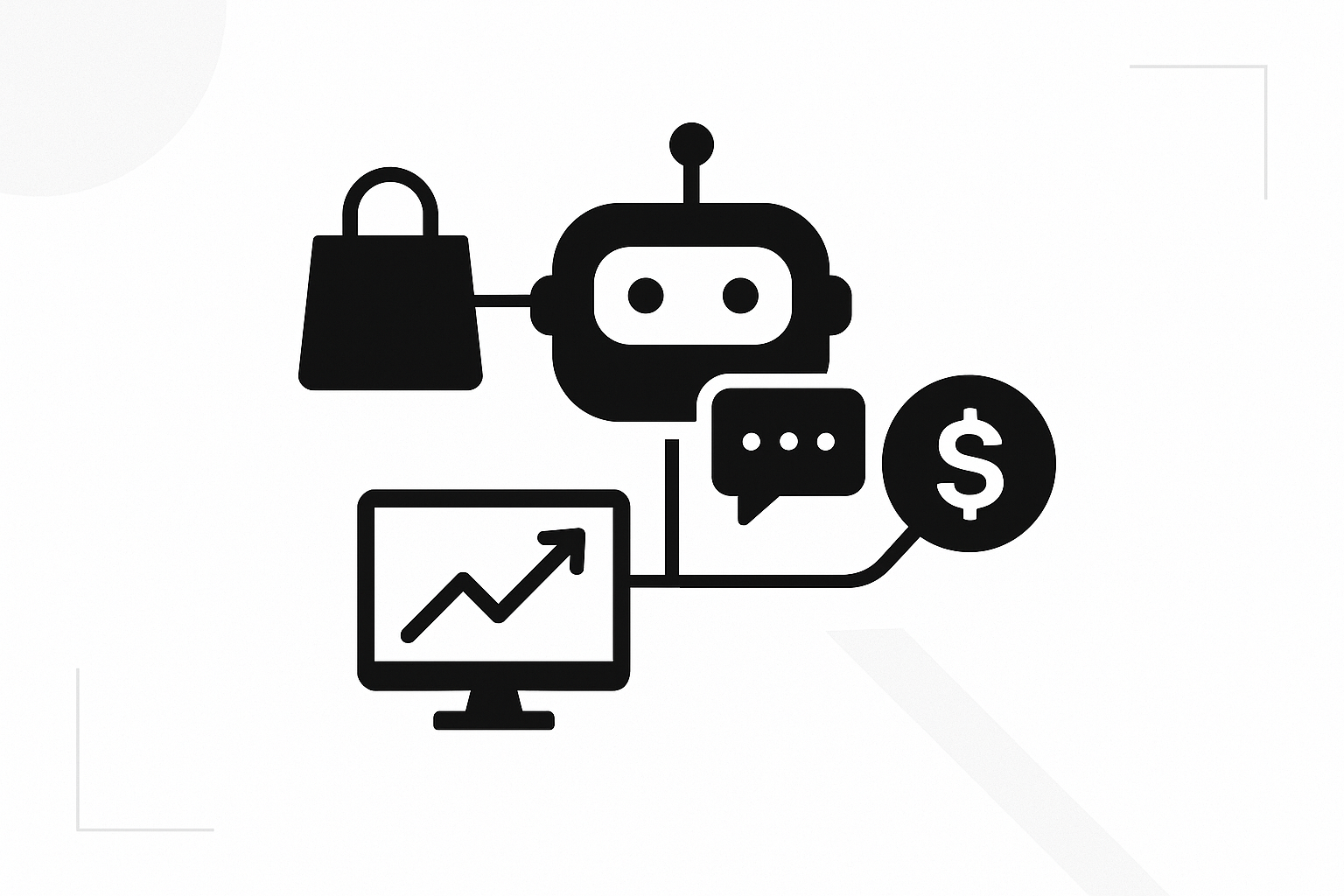Stop Silent Drop-Offs: A WooCommerce AI Chatbot and Smart Sales Assistant That Rescues Abandoned Carts and Increases AOV
Introduction: Your Store Is Bleeding Revenue You Can’t See
Every day, high-intent shoppers quietly abandon their carts and never return. You pay to acquire those clicks and sessions. You merchandise, optimize, and follow up with emails—yet most visitors still vanish without a trace. That’s the cost of “silent drop-offs.”
There’s a faster, smarter way to intervene at the moment it matters: a WooCommerce AI chatbot that behaves like a trained sales associate. It answers questions, overcomes objections, proactively rescues carts, and intelligently nudges shoppers to the right products—raising conversion rates and helping you increase AOV WooCommerce wide. In this guide, you’ll learn how an AI sales assistant for WooCommerce turns abandoned cart recovery into a repeatable, measurable system.
The Core Problem: Silent Drop-Offs Are Eating Your Profit
Abandonment is normal in e-commerce, but the degree to which it happens is unsustainable. Shoppers stall for predictable reasons: uncertainty about fit, shipping cost surprises, stock questions, payment friction, analysis paralysis, or simply a small, unanswered doubt. When no one is there to help, they leave.
The risks of inaction compound over time:
- Wasted ad spend: You pay to acquire visitors with no last-mile support to convert them.
- Flat AOV: Shoppers choose the smallest, safest option because no one suggests better-value bundles or add-ons.
- Spike in support tickets: Basic pre-purchase questions clog your inbox, delaying assistance for real buyers.
- Coupon dependency: You rely on blanket discounts to convert hesitant buyers, training customers to wait for promos.
- Lost loyalty: A poor buying experience turns a “maybe” into a competitor’s “yes.”
Every silent drop-off is a conversation that never happened. The fix is not more emails or retargeting ads; it’s answering the right question, at the right moment, right on the product or cart page. That’s what a smart WooCommerce chatbot plugin delivers.
What a WooCommerce AI Chatbot Actually Does
A modern WooCommerce AI chatbot is more than a help widget. It’s a sales-focused assistant trained on your catalog, policies, and customer language. It engages shoppers in real time with personalized, contextual prompts that feel helpful rather than pushy.
Key capabilities include:
- Context-aware support: Reads the page context (PLP, PDP, cart, checkout) and tailors messages accordingly.
- Abandoned cart interception: Recognizes exit intent, long dwell time, or cart friction and launches a recovery flow.
- Product guidance: Asks a few clarifying questions, then suggests the best-fit product or bundle.
- Objection handling: Answers common pre-purchase questions—shipping, returns, compatibility, sizing—without a ticket.
- Upsell and cross-sell: Offers relevant add-ons to increase order value without discounting.
- First-party data collection: Gathers preferences and contact consent (when appropriate) to power remarketing and retention.
Done well, it behaves like your best retail associate—proactive, helpful, and revenue-minded. If you want to see how this looks in practice, explore a sales-first WooCommerce chatbot plugin like Velocity Chat for WooCommerce.
How an AI Sales Assistant for WooCommerce Recovers Carts
Abandoned cart recovery on WooCommerce works best when the assistant anticipates friction and intervenes gracefully. The mechanics are simple and effective:
- Detect risk: Track signals like exit intent, back button usage, idle time, shipping ZIP entry without proceeding, or coupon code searching.
- Launch a tailored prompt: Offer help that fits the moment—“Any questions about sizing?”—instead of a generic “How can I help?”
- Provide instant answers: Resolve the blocker in-chat (shipping ETA, compatibility, stock dates) with data pulled from WooCommerce and your knowledge base.
- Offer a nudge: Incentivize completion responsibly (free shipping threshold reminder, low-inventory notice, limited-time bonus, or payment method tips).
- Save the cart: If the shopper still leaves, capture consent for a reminder via email or SMS and send a crafted follow-up sequence.
Because the AI sales assistant for WooCommerce works on-page in real time, it reduces abandonment that typical email-only automations can’t. It removes friction before the cart is lost, not after.
Step-by-Step: Launch Your Smart Sales Assistant in a Week
You don’t need a long project plan. You need a focused, revenue-first rollout. Here is a practical, staged approach you can execute quickly.
Day 1–2: Foundations and Training
- Define goals: Set targets for conversion lift, abandoned cart recovery WooCommerce rate, and AOV.
- Gather training data: Upload product feeds, policies, shipping rules, sizing charts, FAQs, and brand tone guidelines.
- Map high-impact pages: Prioritize engagement on top PDPs, cart, and checkout.
Day 3: Conversation Design for Revenue
- Draft core flows: Pre-purchase Q&A, guided recommendations, cart rescue, and post-purchase upsell.
- Set triggers: Exit intent on cart/checkout, long dwell on PDP, returning visitor on PLP.
- Write prompts: Use concise, value-first copy that sounds like your brand.
Day 4: Technical Setup
- Install the plugin and connect to WooCommerce, search, and inventory.
- Integrate consent capture with your email/SMS platform.
- Configure analytics events for view → engage → conversion attribution.
Day 5–6: QA and Guardrails
- Test edge cases: Out-of-stock, variant unavailability, shipping delays, and coupon logic.
- Set escalation rules: Hand off to a human for sensitive topics or high-order-value carts.
- Limit discount usage: Prioritize non-discount nudges (free shipping thresholds, bundles) before incentives.
Day 7: Soft Launch and Monitor
- Enable on 20–30% of traffic to test baseline lift.
- Monitor conversations for tone and accuracy.
- Review early revenue metrics and iterate.
Conversation Scripts That Drive Abandoned Cart Recovery WooCommerce
Effective chat copy is short, empathetic, and specific to the page and product. Use prompts that lower anxiety and move buyers forward without spamming.
On PDP (long dwell)
- “Curious about sizing or compatibility? I can help you choose the right option.”
- “Most shoppers pair this with [Accessory]. Want to see if it fits your use case?”
On Cart (exit intent)
- “Leaving already? Your items are reserved for 10 minutes. Need help with shipping, returns, or payment methods?”
- “You’re $18 away from free shipping. Would you like a quick suggestion to reach it with something useful?”
On Checkout (friction signals)
- “Having trouble with the address or payment? I can help you complete securely.”
- “Delivery ETA to [ZIP] is 3–5 days. Is that timeline okay?”
Build a recovery fallback for cart abandoners who still leave:
- “Can I send a reminder of your cart with your items and delivery ETA? One-click, no spam.”
- “Prefer SMS? I’ll message you once if stock runs low or a price changes.”
Increase AOV WooCommerce with Intelligent Recommendations and Bundles
The best way to increase AOV is to make the higher-value choice the obvious and delightful one. Your assistant should read context and suggest relevant upgrades, not random extras.
- Product fit questions: Ask 2–4 high-signal questions to narrow to the right tier or bundle.
- Bundle logic: Offer a bundle that solves the job-to-be-done, not just a bigger basket.
- Accessory matching: Suggest add-ons that extend value (warranty, refills, complementary items).
- Threshold nudges: Help shoppers reach free shipping or loyalty milestones with helpful picks.
For guided selling at scale, pair your assistant with a quiz that captures preferences and routes shoppers to the perfect product or bundle. If you want a proven, no-code option, explore the Product Recommendation Quiz for WooCommerce and feed its outcomes back into the chatbot’s recommendation logic.
Proactive Engagement Without Being Pushy
Proactive chat should feel like timely service, not a pop-up attack. Control frequency, tailor the message, and always provide an easy dismissal.
- Throttle prompts: Cap to once per session per context to avoid fatigue.
- Segment messages: New vs. returning shoppers get different prompts.
- Align to scroll depth: Engage after engagement, not immediately on load.
- Use micro-incentives sparingly: Lead with clarity and value, not discounts.
Proactivity works best when it is curiosity-driven (“Need help choosing?”) rather than transactional (“Here’s 10% off”). Buyers want confidence first, incentives second.
Data, Integrations, and Guardrails
A sales-focused assistant must be connected, trustworthy, and brand-safe. Treat it like a new revenue channel with clear governance.
- Catalog sync: Keep product availability, pricing, and attributes current.
- Policy authority: Ensure shipping, returns, and warranty rules are up to date.
- CRM and ESP: Pass leads and consent to your email/SMS tools with event context.
- Attribution: Fire events for chat-engaged transactions and view-through influence.
- Moderation: Set topics to avoid and escalation paths for complex or sensitive issues.
- Compliance: Capture consent before messaging, honor deletion requests, and log data access.
With these guardrails, the assistant amplifies your brand rather than improvising outside its lane. You get the upside of conversational commerce with control and accountability.
Optimize with Metrics That Matter
Don’t measure vanity metrics like chat opens. Optimize for revenue outcomes and cost efficiency.
- Cart save rate: Percentage of at-risk sessions that complete purchase after chat engagement.
- Checkout completion lift: Incremental increase in conversion on pages where the assistant is active.
- AOV uplift: Difference in average order value between chat-influenced and non-chat orders.
- Time-to-first-response: Under 1 second keeps attention.
- Containment rate: Percentage of conversations resolved without human escalation.
- Discount dependency: Track incentives used; aim for recovery without margin erosion.
Run controlled experiments. Start with a 50/50 split of chat-enabled vs. control traffic on high-intent pages. Measure over 2–4 weeks to smooth seasonality. Prioritize wins that drive both conversion and AOV.
Playbook: Proven Prompts for Common Objections
Use tested templates and refine them with your product language.
- Price anxiety: “This lasts 3x longer than cheaper alternatives. Want to see a bundle that lowers your cost per use?”
- Fit/compatibility: “What device/model are you using? I’ll check compatibility and show only matching options.”
- Shipping uncertainty: “Enter your ZIP for a precise delivery window and any local carrier notes.”
- Too many choices: “Tell me your top priority—performance, price, or ease-of-use—and I’ll narrow it to 2–3 perfect picks.”
- Trust concerns: “Here are the top 3 customer reviews from buyers like you, plus our no-hassle return policy.”
Keep responses short, link to evidence on-page, and always close with a clear next step: Add to cart, compare two products, or request a reminder.
Where the Assistant Belongs in Your Funnel
Conversational commerce works across the funnel, but prioritize the money pages first.
- Mid-funnel (PLP, PDP): Guide selection, surface FAQs, and reduce analysis paralysis.
- Bottom-funnel (cart, checkout): Remove friction, provide payment tips, and confirm delivery expectations.
- Post-purchase: Suggest setup content, cross-sell refills or accessories, and enroll buyers in loyalty.
Roll out in layers: PDP and cart first, then checkout, then PLP, and finally post-purchase. Each step compounds revenue impact.
Team Workflow and Human Handoff
AI should handle the predictable 80% and escalate the rest. Protect your team’s time while keeping high-value shoppers delighted.
- Define escalation triggers: High order value, VIP segments, complex warranty questions, or repeated confusion.
- Set SLAs: Promise a human reply within a set window for escalations.
- Context pass-through: Send conversation history and product context to your support tool.
- Feedback loop: Tag assistant answers that need improvement and retrain weekly.
This hybrid model preserves human empathy where it matters and converts more sessions with less effort.
Benefits and Proof: Why This Channel Outperforms “More of the Same”
Merchants adopt chat for support and stay for revenue. The sales impact stems from timing, context, and the ability to handle objections before the cart is lost.
- Higher conversion on high-intent pages: Real-time answers remove blockers emails can’t fix.
- Reliable abandoned cart recovery WooCommerce: On-page rescue reduces lost carts before they exit, then follows up with consented reminders.
- Meaningful AOV lift: Smart recommendations make upgrades obvious and valuable.
- Lower support load: The assistant deflects repetitive pre-purchase tickets, freeing your team for complex issues.
- Cleaner margins: Recovery relies more on clarity and bundling, not blanket discounts.
A simple ROI model to sanity-check the opportunity:
- Traffic to cart per month: 20,000 sessions
- Current cart abandonment: 75% (15,000 at-risk)
- Assistant-influenced saves: 10% of at-risk (1,500 orders)
- Blended AOV increase: +8%
Even with conservative assumptions, the captured revenue dwarfs the cost of a WooCommerce chatbot plugin. Industry benchmarks often show 10–20% recovery among engaged sessions; your mileage will vary, but the mechanism is repeatable and measurable.
Common Pitfalls and How to Avoid Them
Most underperforming chat implementations make the same mistakes. Avoid these to accelerate ROI.
- Generic prompts: “How can I help?” isn’t helpful. Make prompts specific to the page and intent.
- Discount overuse: Train the assistant to lead with value, not coupons.
- Weak catalog sync: Out-of-date stock or pricing breaks trust instantly.
- No escalation: Don’t trap customers in AI loops—offer a human path.
- No measurement plan: Attribute revenue to chat or you won’t know what to optimize.
Treat your assistant like a high-performing sales rep. Give it product knowledge, coach it weekly, and measure what matters.
Who Benefits Most From an AI Sales Assistant for WooCommerce
Any store with meaningful consideration benefits, but some segments see outsized gains.
- Apparel and footwear: Sizing, fit, and returns anxiety are classic abandonment triggers.
- Electronics and accessories: Compatibility questions block checkout.
- Beauty and supplements: Routine and regimen matching increase AOV via bundles.
- Home and DIY: Use-case guidance and tool matching reduce analysis paralysis.
- Lifestyle and hobby: Cross-sells and kit-building make value obvious.
If choice, fit, or use-case matters to your buyers, a conversational assistant will pay for itself quickly.
Pricing, Margin, and Discount Strategy
Plan your incentives with margin discipline. Use them as a last resort, not the first touch.
- Hierarchy of nudges: Clarity → social proof → bundle value → threshold reminder → time-bound perk.
- Segmented offers: Reserve incentives for first-time buyers or high inventory items.
- Offer testing: Rotate perks (free shipping threshold, bonus sample) and track gross margin impact.
- Guardrails: Cap per-session incentives and require a qualifying cart total.
This strategy saves the sale without training customers to expect discounts every visit.
Security, Privacy, and Brand Safety
Trust drives conversion. Your assistant must handle data responsibly and respect consent.
- Consent-first messaging: Ask before sending reminders by email or SMS.
- Data minimization: Collect only what’s needed to help and follow up.
- Access controls: Limit who on your team can view conversation transcripts.
- Content filters: Block disallowed topics and compliant language requirements.
- Transparency: Clearly state response limitations and escalation options.
When shoppers feel safe, they buy with confidence—and recommend you to others.
Conclusion & Call-to-Action: Turn Chat into a Revenue Channel, Not a Cost Center
Silent drop-offs aren’t a mystery. They’re predictable moments of doubt and friction. A purpose-built WooCommerce AI chatbot solves them in real time, rescuing carts, unlocking consistent abandoned cart recovery WooCommerce, and helping you increase AOV WooCommerce with thoughtful guidance and bundles.
If you’re ready to test a sales-first AI sales assistant for WooCommerce, start where the money is: PDP, cart, and checkout. Train it on your catalog, set smart triggers, and measure the uplift.
Want to see it live? Book a walk-through and experience conversational selling in action on our interactive demo. Prefer to jump in? Explore a revenue-focused assistant built for WooCommerce in Velocity Chat for WooCommerce and pair it with guided selling via the Product Recommendation Quiz for WooCommerce to maximize AOV.
Frequently Asked Questions about Stop Silent Drop-Offs: A Smart Sales Assistant for WooCommerce That Rescues Abandoned Carts and Increases AOV
What is a WooCommerce AI chatbot and how does it help with abandoned cart recovery?
A WooCommerce AI chatbot is a sales-focused assistant that engages shoppers in real time on PDP, cart, and checkout pages. It answers pre-purchase questions, detects exit intent or friction, and launches tailored recovery prompts. By removing blockers before a shopper leaves—and following up with consented reminders—it reduces abandonment that email-only flows miss.
Will a WooCommerce chatbot plugin really increase AOV or just handle support?
Beyond support, a sales-first assistant recommends higher-value products, relevant bundles, and useful add-ons based on shopper context. It guides buyers to the best-fit option, reminds them of free-shipping thresholds, and suggests complementary items. This creates value, not spam, and reliably lifts AOV when prompts are targeted and catalog data is accurate.
How long does it take to deploy an AI sales assistant for WooCommerce?
Most stores can launch a focused MVP in about a week. Day 1–2 cover goals and training data, Day 3 conversation design, Day 4 technical setup, Day 5–6 QA and guardrails, and Day 7 a soft launch. Start on high-intent pages, measure lift, and iterate weekly as you expand coverage.
How do I measure ROI from abandoned cart recovery WooCommerce?
Track cart save rate, checkout completion lift, AOV uplift, and revenue attributed to chat-engaged sessions. Run A/B splits on high-intent pages for 2–4 weeks to establish a baseline. Monitor discount usage to protect margins. Pair quantitative metrics with transcript reviews to improve prompts and recommendation logic.
Is a WooCommerce AI chatbot compliant and brand-safe?
Yes, when configured correctly. Capture consent before sending reminders, minimize data collection, and set escalation rules for sensitive topics. Keep product, pricing, and policy data current. Add content filters and access controls. Be transparent about what the assistant can do and provide a human handoff when needed.



